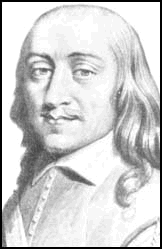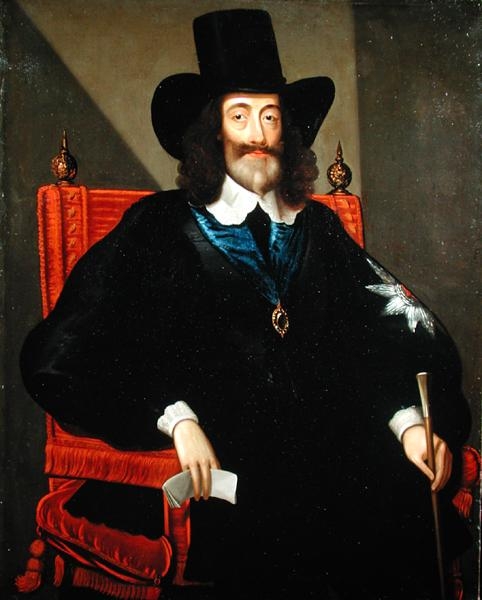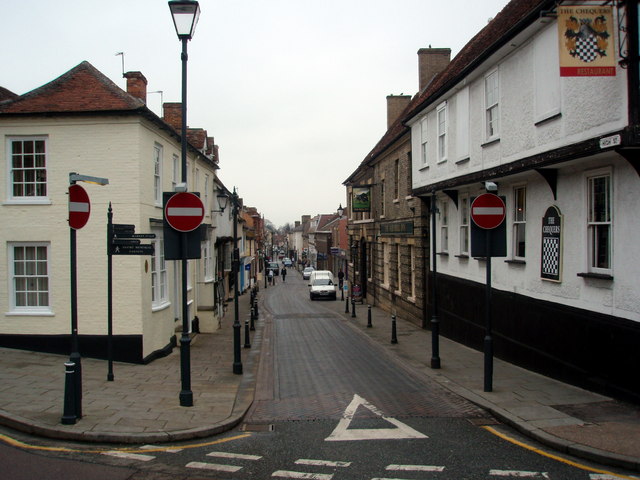|
Agitators
The Agitators were a political movement as well as elected representatives of soldiers, including members of the New Model Army under Lord General Fairfax, during the English Civil War. They were also known as ''adjutators''. Many of the ideas of the movement were later adopted by the Levellers. History ''Agitators'', or ''adjutators'', was the name given to representatives elected in 1647 by the different regiments of the English Parliamentary army. The word really means an agent, but it was confused with "adjutant," often called "agitant," a title familiar to the soldiers, and thus the form "adjutator" came into use. Early in 1647 the Long Parliament wished either to disband many of the regiments or to send them to Ireland. The soldiers, whose pay was largely in arrears, refused to accept either alternative, and eight of the cavalry regiments elected agitators, called at first commissioners, who laid their grievances before the three generals, and whose letter was read in the ... [...More Info...] [...Related Items...] OR: [Wikipedia] [Google] [Baidu] |
Levellers
The Levellers were a political movement active during the Wars of the Three Kingdoms who were committed to popular sovereignty, extended suffrage, equality before the law and religious tolerance. The hallmark of Leveller thought was its populism, as shown by its emphasis on equal natural rights, and their practice of reaching the public through pamphlets, petitions and vocal appeals to the crowd. The Levellers came to prominence at the end of the First English Civil War (1642–1646) and were most influential before the start of the Second Civil War (1648–49). Leveller views and support were found in the populace of the City of London and in some regiments in the New Model Army. Their ideas were presented in their manifesto " Agreement of the People". In contrast to the Diggers, the Levellers opposed common ownership, except in cases of mutual agreement of the property owners. They were organised at the national level, with offices in a number of London inns and taverns such ... [...More Info...] [...Related Items...] OR: [Wikipedia] [Google] [Baidu] |
Army Council (1647)
The Army Council was a body established in 1647 to represent the views of all levels of the New Model Army. It originally consisted of senior commanders, like Sir Thomas Fairfax, and representatives elected by their regiments, known as Agitators. Following the Putney Debates of October to November 1647, Fairfax, Oliver Cromwell and Henry Ireton grew concerned by their radicalism, and in 1648, Agitators were removed from the Council. Now dominated by the so-called Grandees, it became the Council of Officers. Background When the First English Civil War began in 1642, the vast majority on both sides believed a 'well-ordered' monarchy was divinely mandated. They disagreed on what 'well-ordered' meant, and who held ultimate authority in clerical affairs. Royalists generally supported a Church of England governed by bishops, appointed by, and answerable to, the king; Puritans believed he was answerable to the leaders of the church, appointed by their congregations. However, 'Puritan ... [...More Info...] [...Related Items...] OR: [Wikipedia] [Google] [Baidu] |
New Model Army
The New Model Army was a standing army formed in 1645 by the Parliamentarians during the First English Civil War, then disbanded after the Stuart Restoration in 1660. It differed from other armies employed in the 1639 to 1653 Wars of the Three Kingdoms in that members were liable for service anywhere in the country, rather than being limited to a single area or garrison. To establish a professional officer corps, the army's leaders were prohibited from having seats in either the House of Lords or House of Commons. This was to encourage their separation from the political or religious factions among the Parliamentarians. The New Model Army was raised partly from among veteran soldiers who already had deeply held Puritan religious beliefs, and partly from conscripts who brought with them many commonly held beliefs about religion or society. Many of its common soldiers therefore held dissenting or radical views unique among English armies. Although the Army's senior officers d ... [...More Info...] [...Related Items...] OR: [Wikipedia] [Google] [Baidu] |
Grandee
Grandee (; es, Grande de España, ) is an official royal and noble ranks, aristocratic title conferred on some Spanish nobility. Holders of this dignity enjoyed similar privileges to those of the peerage of France during the , though in neither country did they have the significant constitutional political role the House of Lords gave to the Peerage of England and later Peerage of the United Kingdom. A "Grandee of Spain" would have nonetheless enjoyed greater "social" privileges than those of other similar European dignities. With the exception of Duke of Fernandina, Fernandina, List of dukes in the peerage of Spain, all Spanish dukedoms are automatically attached to a Grandeeship yet only a few Marquessates, Count (title), Countships, List of viscounts in the peerage of Spain, Viscountcies, List of barons in the peerage of Spain, Baronies and List of lords in the peerage of Spain, Lordships have the distinction. A single person can be a Grandee of Spain multiple times, as Gra ... [...More Info...] [...Related Items...] OR: [Wikipedia] [Google] [Baidu] |
Long Parliament
The Long Parliament was an English Parliament which lasted from 1640 until 1660. It followed the fiasco of the Short Parliament, which had convened for only three weeks during the spring of 1640 after an 11-year parliamentary absence. In September 1640, King Charles I issued writs summoning a parliament to convene on 3 November 1640.This article uses the Julian calendar with the start of year adjusted to 1 January – for a more detailed explanation, see old style and new style dates: differences between the start of the year. He intended it to pass financial bills, a step made necessary by the costs of the Bishops' Wars in Scotland. The Long Parliament received its name from the fact that, by Act of Parliament, it stipulated it could be dissolved only with agreement of the members; and those members did not agree to its dissolution until 16 March 1660, after the English Civil War and near the close of the Interregnum.. The parliament sat from 1640 until 1648, when it was p ... [...More Info...] [...Related Items...] OR: [Wikipedia] [Google] [Baidu] |
Oliver Cromwell
Oliver Cromwell (25 April 15993 September 1658) was an English politician and military officer who is widely regarded as one of the most important statesmen in English history. He came to prominence during the 1639 to 1651 Wars of the Three Kingdoms, first as a senior commander in the Parliamentarian army and then as a politician. A leading advocate of the execution of Charles I in January 1649, which led to the establishment of the Republican Commonwealth of England, Scotland and Ireland, he ruled as Lord Protector from December 1653 until his death in September 1658. Cromwell nevertheless remains a deeply controversial figure in both Britain and Ireland, due to his use of the military to first acquire, then retain political power, and the brutality of his 1649 Irish campaign. Educated at Sidney Sussex College, Cambridge, Cromwell was elected MP for Huntingdon in 1628, but the first 40 years of his life were undistinguished and at one point he contemplated emigration to ... [...More Info...] [...Related Items...] OR: [Wikipedia] [Google] [Baidu] |
Parliament Of England
The Parliament of England was the legislature of the Kingdom of England from the 13th century until 1707 when it was replaced by the Parliament of Great Britain. Parliament evolved from the great council of bishops and peers that advised the English monarch. Great councils were first called Parliaments during the reign of Henry III (). By this time, the king required Parliament's consent to levy taxation. Originally a unicameral body, a bicameral Parliament emerged when its membership was divided into the House of Lords and House of Commons, which included knights of the shire and burgesses. During Henry IV's time on the throne, the role of Parliament expanded beyond the determination of taxation policy to include the "redress of grievances," which essentially enabled English citizens to petition the body to address complaints in their local towns and counties. By this time, citizens were given the power to vote to elect their representatives—the burgesses—to the H ... [...More Info...] [...Related Items...] OR: [Wikipedia] [Google] [Baidu] |
George Joyce
Cornet George Joyce (born 1618) was a low-ranking officer in the Parliamentary New Model Army during the English Civil War. Between 2 and 5 June 1647, while the New Model Army was assembling for rendezvous at the behest of the recently formed Army Council, Joyce seized King Charles I from Parliament's custody at Holdenby House and took him to Thomas Fairfax's headquarters on Triplo Heath (8 miles south of Cambridge), a move that weakened Parliament's position and strengthened the Army's. On 17 June 1650 Joyce was appointed governor of the Isle of Portland An isle is an island, land surrounded by water. The term is very common in British English. However, there is no clear agreement on what makes an island an isle or its difference, so they are considered synonyms. Isle may refer to: Geography * Is ..., in the August he was given a commission as lieutenant-colonel in a regiment raised by Colonel James Henne. Notes and references 1618 births Roundheads Year of death ... [...More Info...] [...Related Items...] OR: [Wikipedia] [Google] [Baidu] |
Royston, Hertfordshire
Royston is a town and Civil parishes in England, civil parish in the North Hertfordshire, District of North Hertfordshire and county of Hertfordshire in England. It is situated on the Prime meridian (Greenwich), Greenwich Meridian, which brushes the town's eastern boundary, and at the northernmost apex of the county on the same latitude as towns such as Milton Keynes and Ipswich. It is about north of central London in a rural area. Before the boundary changes of the 1890s, the boundary between Hertfordshire and Cambridgeshire ran east–west through the centre of town along the middle of Melbourn Street. The town has a population of 15,781 as of 2011.Office for National Statistics : ''Census 2011 : Parish Headcounts : North Hertfordshire'' Retrieved 2013-03-18 ... [...More Info...] [...Related Items...] OR: [Wikipedia] [Google] [Baidu] |
Thriplow Heath
Thriplow () is a village in the civil parish of Thriplow and Heathfield, in Cambridgeshire, England, south of Cambridge. The village also gives its name to a former Cambridgeshire hundred. History The parish of Thriplow covers , roughly spanning the land between the former London to Cambridge coaching road (now the B1368) and the Royston to Newmarket road (now the A505). The presence of tumuli in the south of the parish suggests an Iron Age settlement; and a barrow to the east of the village contains a Bronze Age burial. The village itself probably existed in Romano-British times (around AD 150). The Icknield Way to the south of the village was probably an important factor in the village's growth. Listed as ''Tripelan'' in around 1050 and ''Trepeslau'' in the Domesday Book, the name "Thriplow" means "Hill or tumulus of a man called Tryppa". Tryppa is believed to have been a Bronze Age chieftain who may be buried in the tumulus just south east of the church. In 1647 the New ... [...More Info...] [...Related Items...] OR: [Wikipedia] [Google] [Baidu] |
Solemn Engagement
The Solemn Engagement (''A Solemne Engagement of the Army, under the Command of his Excellency Sir Thomas Fairfax'') was a declaration to the English House of Commons adopted unanimously by the General Council of the Army commanded by Thomas Fairfax at Newmarket on 29 May 1647. Acting in response to a parliamentary threat of disbandment, the document asserted that the army would not disband until satisfactory terms were negotiated. This was in part because of weeks of arrears owed to the soldiers, and in frustration of the slow progress parliament had made in securing a settlement with the imprisoned Charles I. Events The agreement was read, and assented to by all the officers and soldiers of the regiments of the New Model Army that rendezvoused on Kentford Heath near Newmarket on Friday and Saturday 4 and 5 June. On 8 June Fairfax sent the Solemn Engagement to Parliament with a letter. In the letter he explained that because the King was now with the Army (Cornet Joyce having ... [...More Info...] [...Related Items...] OR: [Wikipedia] [Google] [Baidu] |
Newmarket, Suffolk
Newmarket is a market town and civil parish in the West Suffolk district of Suffolk, England. Located (14 miles) west of Bury St Edmunds and (14 miles) northeast of Cambridge. It is considered the birthplace and global centre of thoroughbred horse racing. It is a major local business cluster, with annual investment rivalling that of the Cambridge Science Park, the other major cluster in the region. It is the largest racehorse training centre in Britain, the largest racehorse breeding centre in the country, home to most major British horseracing institutions, and a key global centre for horse health. Two Classic races, and an additional three British Champions Series races are held at Newmarket every year. The town has had close royal connections since the time of James I, who built a palace there, and was also a base for Charles I, Charles II, and most monarchs since. Elizabeth II visited the town often to see her horses in training. Newmarket has over fifty horse training stabl ... [...More Info...] [...Related Items...] OR: [Wikipedia] [Google] [Baidu] |


_by_Robert_Walker_and_studio.jpg)






